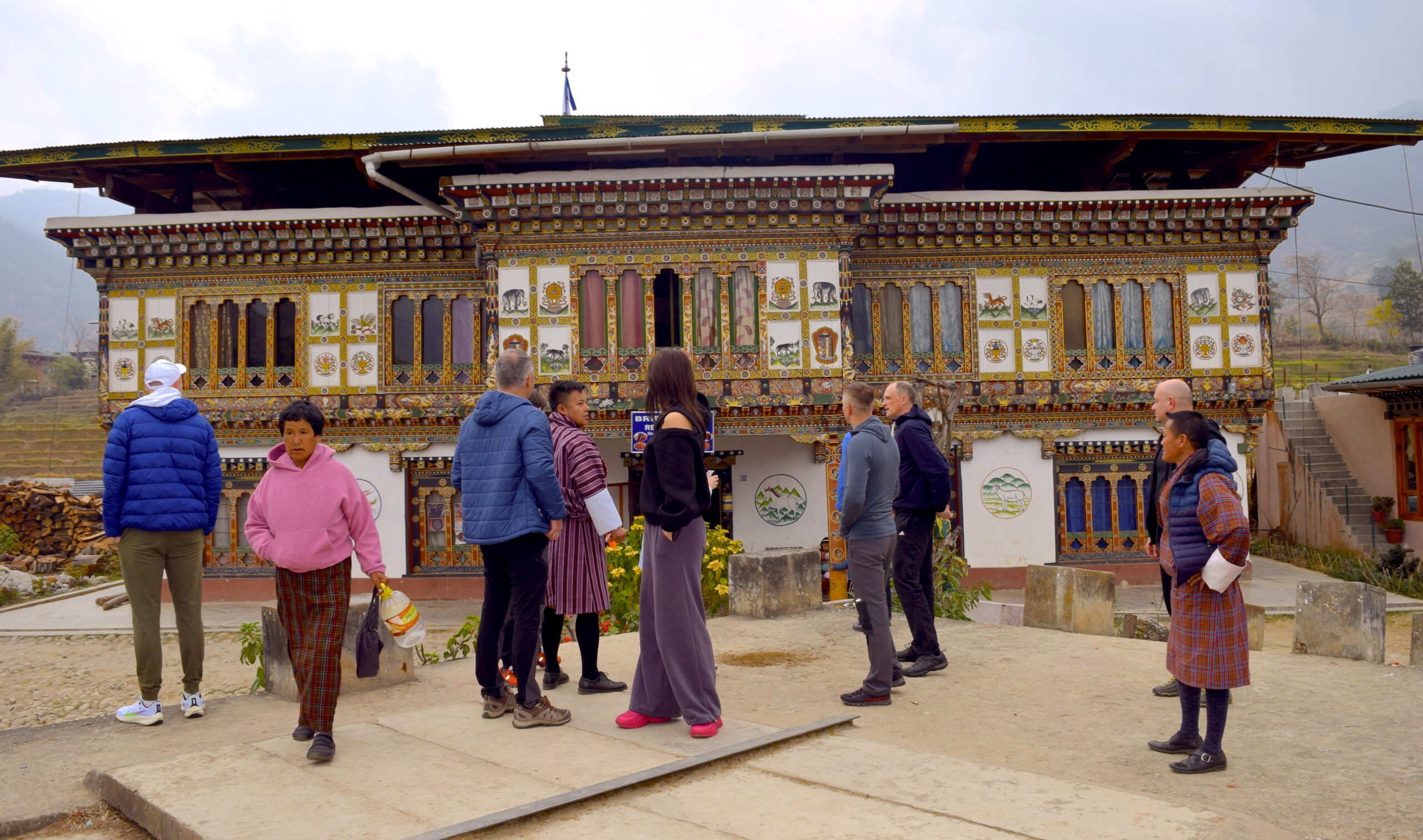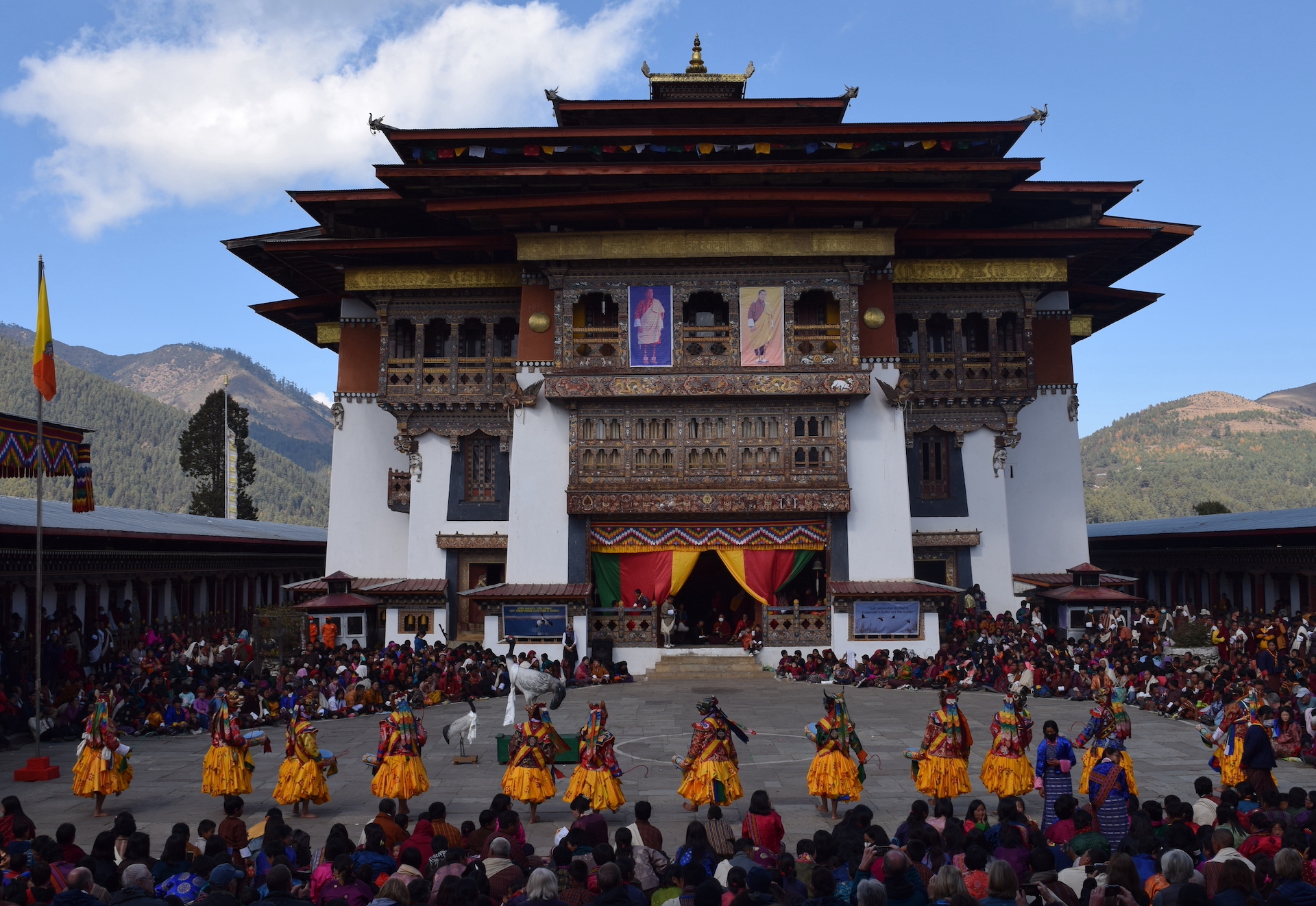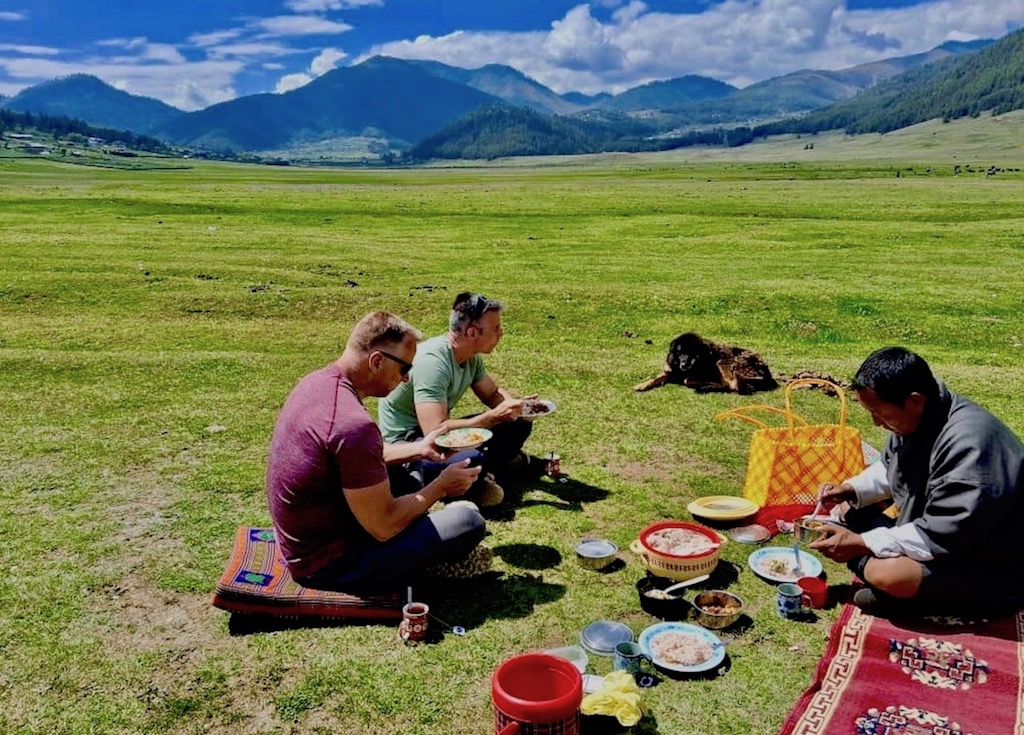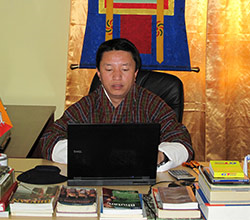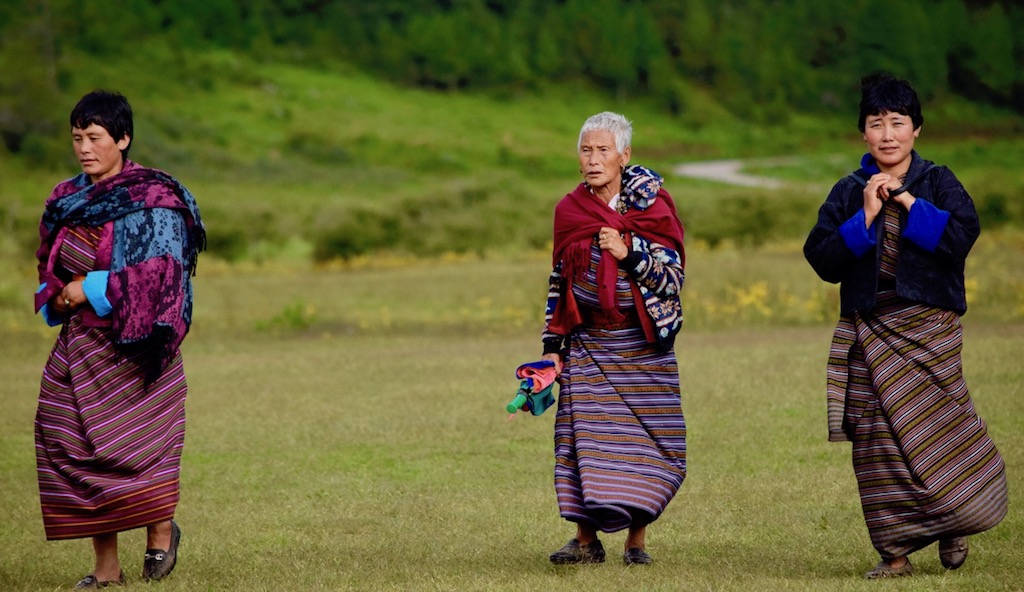Bhutan’s commitment to sustainable development is epitomized through its innovative community-based tourism initiatives. These initiatives not only offer travelers authentic cultural experiences but also empower local communities, promote environmental conservation, and foster socio-economic development.
At the heart of community-based tourism in Bhutan is the concept of homestays. Travelers have the opportunity to stay with local families in rural villages, immersing themselves in the daily life and traditions of Bhutanese communities. This intimate experience allows visitors to participate in household activities, share meals prepared with locally sourced ingredients, and engage in cultural exchange, fostering mutual understanding and appreciation.
Moreover, community-based tourism initiatives often involve the preservation and promotion of traditional arts and crafts. Bhutanese artisans, known for their skill in weaving, painting, woodcarving, and other crafts, play a central role in these initiatives. Travelers can visit artisan workshops and studios, where they can observe the intricate craftsmanship firsthand, learn about the cultural significance of these crafts, and even try their hand at creating their pieces under the guidance of local masters.
In addition to cultural experiences, community-based tourism initiatives in Bhutan also focus on environmental conservation and sustainable development. Many projects aim to protect the country’s pristine natural landscapes and biodiversity while promoting responsible tourism practices. This may include initiatives such as eco-friendly accommodations, waste management programs, and efforts to mitigate the environmental impact of tourism activities.
Furthermore, community-based tourism contributes to socio-economic development by generating income and employment opportunities for residents. By involving communities in the tourism value chain, these initiatives help to redistribute economic benefits more equitably and reduce dependency on external sources of income. This, in turn, contributes to poverty alleviation and the overall well-being of Bhutanese communities.
One example of a successful community-based tourism initiative in Bhutan is the Phobjikha Valley Conservation Area. Here, local communities work together to protect the endangered black-necked cranes that migrate to the valley each winter, while also offering visitors opportunities to learn about traditional farming practices, participate in conservation efforts, and engage in cultural activities such as mask dancing and archery.
In conclusion, Bhutan’s community-based tourism initiatives embody the country’s commitment to holistic development, sustainability, and cultural preservation. By empowering local communities, promoting environmental conservation, and fostering meaningful cultural exchange, these initiatives offer travelers a unique and enriching experience while contributing to the well-being of Bhutanese society as a whole.
Cultural Immersion Activities in Bhutan.
Cultural Immersion Activities in Bhun offers travelers a transformative journey into the heart of this mystical Himalayan kingdom. Through a diverse array of activities, visitors can experience the vibrant traditions, ancient rituals, and profound spirituality that define Bhutanese culture.
One of the most enriching experiences is staying with local families in rural villages. Homestays provide an authentic glimpse into Bhutanese daily life, allowing guests to participate in household chores, share meals prepared with local ingredients, and engage in conversations about traditions and customs. This intimate exchange fosters meaningful connections and deepens cultural understanding.
Participation in traditional rituals and festivals is another highlight of cultural immersion in Bhutan. Throughout the year, the kingdom comes alive with colorful celebrations, such as the Paro Tsechu and Thimphu Tshechu. These religious festivals showcase masked dances, ceremonial rituals, and intricate Bhutanese art forms, providing insight into the country’s spiritual heritage and collective identity.
Bhutan’s culinary traditions are equally captivating, with dishes like ema datshi (chili and cheese stew) and momo (dumplings) reflecting the country’s unique flavors and ingredients. Travelers can engage in hands-on cooking classes to learn the art of Bhutanese cuisine from local chefs, exploring the culinary heritage that nourishes both body and soul.
For those seeking a deeper spiritual connection, Bhutan offers numerous opportunities for meditation and contemplation. Monasteries and temples dot the landscape, offering tranquil settings for introspection and mindfulness. Visitors can join meditation sessions led by Buddhist monks, participate in prayer ceremonies, or embark on silent retreats to rejuvenate the spirit amidst serene natural surroundings.
Exploring Bhutan’s ancient arts and crafts is another avenue for cultural immersion. Skilled artisans continue to practice traditional techniques such as weaving, painting, and woodcarving, preserving centuries-old traditions passed down through generations. Travelers can visit workshops and studios to observe these artisans at work, gaining insight into the intricate craftsmanship that defines Bhutanese craftsmanship.
Trekking ancient trails to remote monasteries and sacred sites offers a deeper appreciation for Bhutan’s cultural and natural heritage. As travelers traverse mountain paths and verdant valleys, they encounter breathtaking landscapes steeped in spiritual significance. Along the way, encounters with local communities provide insights into the symbiotic relationship between people and the land in Bhutan.
Engaging in community-based tourism initiatives further enhances the cultural immersion experience. Travelers can participate in agricultural activities, assist with conservation efforts, or support local artisans through ethical shopping practices. These interactions foster mutual respect and appreciation, creating lasting memories and meaningful connections that transcend cultural boundaries.
In conclusion, cultural immersion in Bhutan offers a multifaceted journey of discovery, where travelers can engage with the country’s rich heritage through authentic experiences, meaningful encounters, and profound insights into the soul of the kingdom.
Visit Bhutan In Spiring Months
Visiting Bhutan in the spring months, particularly from March to May, offers a unique and delightful experience due to various reasons:
- Weather: Spring in Bhutan is characterized by pleasant weather. The temperature starts rising after the winter months, making it an ideal time to explore the country without extreme cold or heat.
- Flora and Fauna: Bhutan is known for its stunning natural beauty. In spring, the landscape bursts into colorful blooms as flowers start to blossom. The rhododendrons, in particular, paint the mountainsides in vibrant hues, creating picturesque scenery. It’s also a time when many species of birds and wildlife are more active.
- Festivals: Bhutanese culture comes alive with several vibrant festivals or tshechus held during the spring months. These festivals showcase traditional dances, music, and rituals, offering visitors a chance to witness the rich cultural heritage of Bhutan. The famous festivals in Bhutan – Paro festival starts from 21 March till 25 March 2024. There are other numuerious festivals held in Spring months like Talo Festival, Gomphu Kora Festival, Gasa Festival and Domkhar Festival.
- Trekking and Outdoor Activities: The comfortable weather in spring makes it an excellent time for trekking and outdoor adventures. Trails become more accessible as the snow melts, allowing for clearer paths and better visibility. Popular treks like the Jomolhari Trek or the Druk Path Trek are especially enjoyable during this time.
- Clear Views of Himalayas: The spring months typically offer clearer skies and better visibility of the majestic Himalayan peaks, providing stunning panoramic views for travelers.
However, it’s essential to consider that while spring offers many advantages, it’s also a popular time to visit Bhutan. Thus, it’s advisable to plan and book accommodations and tours in advance to ensure availability and a smoother travel experience.
9Nights 10Days Bhutan Tour
Embark on a remarkable 9 Nights 10 Days Bhutan Tour that blends the essence of Bhutan’s rich cultural heritage and stunning natural landscapes. From ancient monasteries to lush valleys, this thoughtfully crafted itinerary promises an immersive experience in the heart of the Himalayas.
Embark on this transformative journey, where every day brings you closer to Bhutan’s soul, on the 9 Nights 10 Days Bhutan Tour—an expedition of culture, spirituality, and natural splendor.
-
- Visit to the Capital City of Kingdom of Bhutan.
- Visit to the oldest monastery in Bhutan
- Visit to the most important and scared pilgrimage spot in the Buddhism world – Taktshang Monastery.
- Visit to the largest, oldest and most spectacular Dzongs (fortress), Lhakhang (temples), Museum, Villages and so on.
- Visit to off the beaten track – Phobjikha Valley
- Visit the ancestor home of our Royal Family.
- Visit to the religious heart land of Bhutan – Bumthang valley
- City tour of Paro, Thimphu, Punakha, Wangdiphodrang, Phobjikha, Trongsa, Haa & Bumthang.
Day 01. Arrive to Paro –Thimphu
The flight into Paro on our national carrier, Druk Air or Bhutan Airline, is a befitting introduction to the spectacular beauty of our country. In clear weather, magnificent views of the world’s highest peaks like Gangkar Puensum, give way to the lush green Paro valley as you land. Your Bhutanese escort from Authentic Bhutan Tours– For Your Bhutan Experience! will warmly welcome & greet you on arrival, and then drive you to Thimphu, the capital city of Bhutan. The drive will take about 1 hour and 30 minutes along a river valley, past small villages and traditional farmhouses, through peaceful countryside. It’s a small & charming capital city located in the heart of the Himalayas.
- Lunch will be served in Thimphu.
- Sangaygang Cross Country Hike, the hike is through the pine forest and we can see Thimphu Valley and Tashichho Dzong so beautiful from this hike. The hike will take about 1hr 30mins.
- Towards in the evening, we will visit Tashi Chho Dzong, seat of the National Government and the Central Monastic Body, including the summer residence of the Je Khenpo (Chief Abbot of Bhutan).
- Stroll around Thimphu town.
- Dinner and overnight stay in the hotel, Thimphu
Meal Plan: Welcome Dinner Accommodation: Hotel Thimphu
Day 02. Thimphu – Stay
After our breakfast at hotel, we will do sightseeing in the capital city of Bhutan, Thimphu.
- Memorial Chhorten, built in 1974 in the memory of third king late Jigme Dorji Wangchuk, and the temple inside gives good examples of tantric Buddhist and its philosophy.
- Buddha Point, to see the tallest Buddha Statue in the world.
- Mothithang minizoo to see the National Animal of Bhutan (Takin),
- Zulikha Nunnery, the Thangtong Dewachen nunnery was founded in 1976 by Rikey Jadrel and today it houses the sixty nuns engaged in Buddhist study and practices.
- Folk Heritage Museum, this Folk Heritage Museum is a showcase, the 19-century farmhouse and the living style of the Bhutanese family.
- Lunch in Thimphu town.
- After lunch, visit Paper Factory, were Bhutanese Traditional Papers & paper products are made.
- Weaving Center produces hand-woven textiles on site and has a selection of cloth and ready-made garments for sale. This is one of the few places where you can watch weavers at work
- Then stroll around the town visiting to Authentic Bhutanese handicrafts.
- Dinner and overnight stay at Thimphu Hotel.
Accommodation: Thimphu Hotel
Day 03. Thimphu - Punakha/Wangdi
After our breakfast at hotel, we will drive to Punakha valley, the old capital of Bhutan over Dochula pass. The pass is adorned with 108 small stupas and with many prayer flags. On the clear days, you will see the panoramic view of Eastern Himalayan Mountain ranges so beautifully. Then the road descends through lush forests to the fertile valley of Punakha & Wangdi Phodrang.
- Visit to Chhimi Lhakhang – the temple of fertility.
- Lunch will be served at Punakha.
- Punakha Dzong – the most beautiful dzong in Bhutan. It was the winter capital of Bhutan until 1955 when the capital was permanently shifted to Thimphu. It still served as the winter resident for the central monastic body.
- Longest Suspension Bridge in Bhutan – walk over the longest suspension bridge in Bhutan.
- Evening at leisure.
- Dinner and overnight stay at Punakha/Wangdi Hotel.
Accommodation: Wangdi Hotel
Day 04. Punakha/wangdi - Bumthang
After our breakfast at hotel, we will drive to Bumthang. The drive will take about 6hrs. The road will slowly ascend until Pelela pass (3400m). You may spot Yaks grazing along the roadside by Pele la Pass. The road descends through semi-tropical vegetation and alpine environment, with rhododendron trees and dark green dwarf bamboo. You will stop by at Chendebji Chhorten, the chorten is patterned after Swayambhunath in Kathmandu and was built in 19th century to cover the remains of an evil spirit that was killed at this spot. As you enter Trongsa valley, the huge fortress of Trongsa Dzong, the most impressive dzong in Bhutan appears on the far side of a deep valley.
- Lunch will be served at Trongsa.
- Trongsa Dzong, the largest dzong in Bhutan and it shows one of the most artistic and magnificent works of traditional Bhutanese architecture.
- Tower of Trongsa-Religion and Power in Bhutan. The Tower of Trongsa is a museum in which aspects of Bhutanese culture and history are explained by beautifully objects, while for others it is as scared place of encounter with the gods.
Then continue the drive to Bumthang through the hairpin bends with the dense forest of rhododendron, conifers, alder and oak crossing Yotong La, 3425m. The road then comes out into a wide-open cultivated valley – which is the Chumey Valley, the first of Bumthnag’s four valleys. From here the road goes on straight until we see Jakar Dzong and then drops into bends before straightening out again in the main valley at Chamkhar.
- Dinner and overnight stay at Bumthang Traditional Farmhouse.
Accommodation: Phobjikha hotel
Day 05. Bumthang Halt
Today’s day begins with visiting
- Jambay Lhakhang, which is one of the oldest temples in Bhutan, built in 7th century.
- Kurjey Lhakhang, is named after the body print of Guru Rinpoche which is preserved in a cave inside the oldest of the three buildings.
- Tamshing Lhakhang – which was established by Terton Pema Lingpa in 1501 and is the most important Nyingma Goenba in the country. Lunch in the Bumthang
- Lunch we will visit Mebertsho (Burning Lake) – This is a very scared lake for Bhutanese people. Terton Pema Lingpa discovered several of Guru Rinpoche’s hidden religious treasures from this lake.
- Evening we will visit to Hot Stone Bath (Dhotsho) and try Traditional Archery at Farmers house.
- Dinner and overnight stay at Bumthang – Traditional Farmers House.
Accommodation: Bumthang Hotel
Day 06. Bumthang - Phobjikha
After the breakfast, we will drive to Gangtay, Phobjikha. The drive will take about 4hours. On the way back offers another chance to view the amazing Himalayan ranges. Stop along the way to take photos wherever you find the best spot for the photography
Lunch will be at Phobjikha hotel/Pack lunch.
- Gangtey Goenpa Lhakhang, which his one of the most important Lhakhang in Nyingpa Sect of school.
- Gangtey Natural Hike. The hike will take about 1hr 20 minutes through pine forest and farmhouses where we could see the Phobjikha Valley so beautifully. Phobjikha Valley is a glacial valley and is the winter home of the black-necked cranes. This valley is a designated conservation area and borders to Black Mountain National Park.
- Stroll around the Valley.
- Dinner and overnight stay at hotel, Phobjikha.
Accommodation: Phobjikha Hotel
Day 07. Phobjikha - Haa
After the breakfast, we will drive to Haa. The drive will take about 6hours. At Wangduephodrang we will visit
- Wangduephodrang Dzong, founded in 1638 by Lama Zhabdrung.
- The continue the journey to Haa.
- Lunch will be served on the way.
- Visit to Lhakhang Karpo (White Temple) – one of the 108 monasteries built in one day bye the Tibetan King Songtshen Gampo in the 7th
- Lhakhang Nagpo (Black Temple) – one of the two monasteries in Haa valley built by Tibetan King Songtshen Gampo in the 7th
- Storll aroud Haa valley.
- Dinner and overnight stay at Haa Hotel.
Accommodation: Haa hotel.
Day 08. Haa - Paro
After our breakfast at hotel, we will drive to Paro Valley over Chelela Pass – the highest pass that the motorcar can take us in Bhutan. You will see the mountains so beautifully from the pass on clear days. The pass is adorned with so many prayer flags. Walk around the pass and enjoy the freshness and the scenic beauty of Bhutan.
- Visit toKila Goenpa Nunnery– The young girls and woman pursuing the religious goals in their life. Interaction with nuns here, which is a memorable experiences in your life.
- Lunch at Paro.
- Visit to Paro National Museum– is a cultural museum of Bhutan.
- Stroll around the Paro town.
- Dinner and over night stay at Paro Hotel.
Accommodation: Paro hotel
Day 09. Paro Halt
Today after having breakfast, we will make a hike to Paro Taktshang Monastery, the most famous and sacred monastery in Bhutan. Taktshang means “TigerNest” named after Guru Rinpoche reportedly flew to this site riding on the back of a flying tigress in the 8th century. We have to walk about 2hours and 30minutes up steep from the road end. The trail climbs through beautiful pine forest, many of the trees festooned with Spanish moss, and an occasional grove of fluttering prayer flags. Lunch will be served at Taktshang cafeteria.
While coming back, visit Kyichu Lhakhang, it is one of the two most sacred and the oldest temples in Bhutan, built in 7th century by Tibetan king Songtsen Gampo (the 33rd Tibetan king, who is also the manifestation of avoloketeshivara, commonly known to Bhutanese as Chenrize). Evening at leisure, dinner and overnight stay at Paro Hotel
Accommodation: Paro hotel
Day 10. Paro - Airport
After our breakfast, we will drive to Paro International Airport for your onward flight. Our guide and driver will bid you farewell here at the airport. We wish you a very safe and pleasant flight for your onward destinations.
Start planning your tailor-made Dream Holiday to Bhutan – The Land of happiness!
In order to experience the best and rewarding fulfillment clients must plan in advance the different logistics that you have in your minds before actually venturing into the world of trips. You might have wishes and hopes for which you need to plan.
The following information will help you to plan your dream trip to Bhutan.
1. When and how to visit Bhutan?
Choose your traveling date like Arrival/Departure date. You also need to choose entry/depart Bhutan via AIR or LAND.
By Air: Druk Air, the national carriers is the only service operator in the kingdom and operates several flights per week from Bangkok (Thailand), Delhi & Kolkata (India) and Kathmandu (Nepal) to Paro (Bhutan). The Paro International Airport is located about an hour and a half drive from Thimphu, the capital city of Bhutan.
Paro airport is daylight restricted, and the flights are totally dependent on the weather. As a result, sometimes flights are delayed. It is therefore a good idea to keep at least 24 hours of transit time for connecting flights out of Paro. You might also want to consider traveling on a non-restricted ticket so that if you miss a connecting flight, you can be rerouted or seated on the first available carrier.
Sometimes flights into Paro are disrupted because of unfavorable weather conditions. If this occurs, the flight will stop for the night at the transit airport. To be prepared, you may want to carry your essential personal items in your carry-on luggage.
By Land: Phuentsholing, a Bhutanese town in the southwest has road access to India. It is located about 170 km from the Indian domestic airport at Bagdogra, West Bengal. Phuentsholing is about 172 km from Thimphu the capital city of Bhutan and is about 6hours drive distance. And S/
2. What are your itineraries?
All the tours can be customized and extended as per our valued client’s requirements. There are sample itineraries for your kind reference and it will give you some general idea of the likely trip scheduled.
Complete the tour request form and submit it to us. Send us correct name list. We will send you the flight reservation status via email.
After confirming your reservation, we need the scanned copy of member’s passport.
Please remit us full payments and send us the copy of remittance paper via email. Visa will not be accepted without full payment.
We will send you the flight ticket copy and Visa Clearance Copy prior to your departure to Bhutan via email. You need to print out and carry along with you.
Start packing and looking forward to have a memorable trip in the LandThunder Dragon, DrukYul.
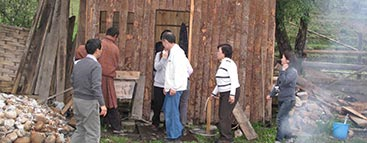
Hot stone bath (Dhotsho) is a traditional bath of Bhutan, where a tradition of heating up stones and then soaking in the water that is in turn heated by the stones. This is also a curative method and is used throughout the country We Bhutanese belief that this bath has so much of medicinal benefits. Some diseases are curable-like joint pains, hypertension, stomach disorder, arthritis and many other minor diseases. Especially for the old age, where we have lots of body pains, joints pains helps a lot by this Hot Stone Bath (Dhotsho).
I think, the minerals in the rocks have certain chemicals, which can cure certain disease of our body. Hot stone bath has no side effects. It is in its pure natural form. We can organize the hot stone bath during your stay in Bhutan.
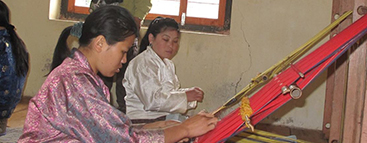
The Bhutanese textiles are rich, vibrant, and colorful and are a complex art form as well as an integral part of the Bhutanese culture. This Bhutan weaving experiences will give you an insight about the rich textiles in Bhutan. You can sit one of the handlooms of Bhutan and weave your self practically. We promise that you will really enjoy this with great satisfaction in your life.
We will also see or learn the natural coloring and dyeing. You can bring your own materials like handkerchief to dye and color. So visit Bhutan and experience it practically by yourself.
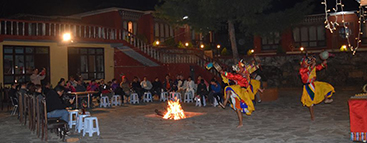
Folk Performing Arts & Music in the Himalayan Kingdom of Bhutan
We have Cultural Program Performing groups, which they will perform like Traditional folk songs, dances and keeps original tunes and dances alive. Moreover, new choreography for some traditional and regional songs is sometimes developed.
The troupe also performs mask dances that have historical and spiritual significance.
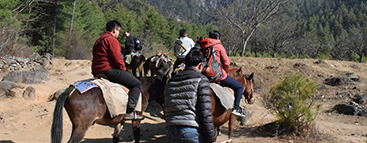
Tiger’s Nest is most visited spot in Bhutan and it is much awaited by every tourist who visits Bhutan to climb to Tiger’s Nest.
It takes about 2 hrs 30mins up steep climb through the forest of pine, oak and Rhododendron. However you can ride the horse and climb till the Taktshang cafeteria.
8Nights 9Days Bhutan Tour
Embark on a transformative journey through the enchanting landscapes and rich culture of the mystical kingdom of Bhutan with our meticulously designed 8 Nights 9 Days Bhutan Tour. Immerse yourself in the essence of Bhutan as you explore its vibrant cities, awe-inspiring monasteries, and picturesque valleys.
Experience Bhutan’s unique blend of tradition and nature on this 8 Nights 9 Days Bhutan Tour, an unforgettable Himalayan odyssey that leaves you inspired and rejuvenated.
- Visit to the Capital City of Kingdom of Bhutan.
- Visit to the oldest monastery in Bhutan
- Visit to the most important and scared pilgrimage spot in the Buddhism world – Taktshang Monastery.
- Visit to the largest, oldest and most spectacular Dzongs (fortress), Lhakhang (temples), Museum, Villages and so on.
- Visit to off the beaten track – Phobjikha Valley
- Visit the ancestor home of our Royal Family.
- Visit to the religious heart land of Bhutan – Bumthang valley
- City tour of Paro, Thimphu, Punakha, Wangdiphodrang, Phobjikha, Trongsa & Bumthang.
Day 01. Arrive to Paro –Thimphu
The flight into Paro on our national carrier, Druk Air or Bhutan Airline, is a befitting introduction to the spectacular beauty of our country. In clear weather, magnificent views of the world’s highest peaks like Gangkar Puensum, give way to the lush green Paro valley as you land. Your Bhutanese escort from Authentic Bhutan Tours– For Your Bhutan Experience! will warmly welcome & greet you on arrival, and then drive you to Thimphu, the capital city of Bhutan. The drive will take about 1 hour and 30 minutes along a river valley, past small villages and traditional farmhouses, through peaceful countryside. It’s a small & charming capital city located in the heart of the Himalayas.
- Lunch will be served in Thimphu.
- Sangaygang Cross Country Hike, the hike is through the pine forest and we can see Thimphu Valley and Tashichho Dzong so beautiful from this hike. The hike will take about 1hr 30mins.
- Towards in the evening, we will visit Tashi Chho Dzong, seat of the National Government and the Central Monastic Body, including the summer residence of the Je Khenpo (Chief Abbot of Bhutan).
- Stroll around Thimphu town.
- Dinner and overnight stay in the hotel, Thimphu
Meal Plan: Welcome Dinner Accommodation: Hotel Thimphu
Day 02. Thimphu – Stay
After our breakfast at hotel, we will do sightseeing in the capital city of Bhutan, Thimphu.
- Memorial Chhorten, built in 1974 in the memory of third king late Jigme Dorji Wangchuk, and the temple inside gives good examples of tantric Buddhist and its philosophy.
- Buddha Point, to see the tallest Buddha Statue in the world.
- Mothithang minizoo to see the National Animal of Bhutan (Takin),
- Zulikha Nunnery, the Thangtong Dewachen nunnery was founded in 1976 by Rikey Jadrel and today it houses the sixty nuns engaged in Buddhist study and practices.
- Folk Heritage Museum, this Folk Heritage Museum is a showcase, the 19-century farmhouse and the living style of the Bhutanese family.
- Lunch in Thimphu town.
- After lunch, visit Paper Factory, were Bhutanese Traditional Papers & paper products are made.
- Weaving Center produces hand-woven textiles on site and has a selection of cloth and ready-made garments for sale. This is one of the few places where you can watch weavers at work
- Then stroll around the town visiting to Authentic Bhutanese handicrafts.
- Dinner and overnight stay at Thimphu Hotel.
Accommodation: Thimphu Hotel
Day 03. Thimphu - Punakha/Wangdi
After our breakfast at hotel, we will drive to Punakha valley, the old capital of Bhutan over Dochula pass. The pass is adorned with 108 small stupas and with many prayer flags. On the clear days, you will see the panoramic view of Eastern Himalayan Mountain ranges so beautifully. Then the road descends through lush forests to the fertile valley of Punakha & Wangdi Phodrang.
- Visit to Chhimi Lhakhang – the temple of fertility.
- Lunch will be served at Punakha.
- Punakha Dzong – the most beautiful dzong in Bhutan. It was the winter capital of Bhutan until 1955 when the capital was permanently shifted to Thimphu. It still served as the winter resident for the central monastic body.
- Longest Suspension Bridge in Bhutan – walk over the longest suspension bridge in Bhutan.
- Evening at leisure.
- Dinner and overnight stay at Punakha/Wangdi Hotel.
Accommodation: Wangdi Hotel
Day 04. Punakha/wangdi - Bumthang
After our breakfast at hotel, we will drive to Bumthang. The drive will take about 6hrs. The road will slowly ascend until Pelela pass (3400m). You may spot Yaks grazing along the roadside by Pele la Pass. The road descends through semi-tropical vegetation and alpine environment, with rhododendron trees and dark green dwarf bamboo. You will stop by at Chendebji Chhorten, the chorten is patterned after Swayambhunath in Kathmandu and was built in 19th century to cover the remains of an evil spirit that was killed at this spot. As you enter Trongsa valley, the huge fortress of Trongsa Dzong, the most impressive dzong in Bhutan appears on the far side of a deep valley.
- Lunch will be served at Trongsa.
- Trongsa Dzong, the largest dzong in Bhutan and it shows one of the most artistic and magnificent works of traditional Bhutanese architecture.
- Tower of Trongsa-Religion and Power in Bhutan. The Tower of Trongsa is a museum in which aspects of Bhutanese culture and history are explained by beautifully objects, while for others it is as scared place of encounter with the gods.
Then continue the drive to Bumthang through the hairpin bends with the dense forest of rhododendron, conifers, alder and oak crossing Yotong La, 3425m. The road then comes out into a wide-open cultivated valley – which is the Chumey Valley, the first of Bumthnag’s four valleys. From here the road goes on straight until we see Jakar Dzong and then drops into bends before straightening out again in the main valley at Chamkhar.
- Dinner and overnight stay at Bumthang Traditional Farmhouse.
Accommodation: Phobjikha hotel
Day 05. Bumthang Halt
Today’s day begins with visiting
- Jambay Lhakhang, which is one of the oldest temples in Bhutan, built in 7th century.
- Kurjey Lhakhang, is named after the body print of Guru Rinpoche which is preserved in a cave inside the oldest of the three buildings.
- Tamshing Lhakhang – which was established by Terton Pema Lingpa in 1501 and is the most important Nyingma Goenba in the country. Lunch in the Bumthang
- Lunch we will visit Mebertsho (Burning Lake) – This is a very scared lake for Bhutanese people. Terton Pema Lingpa discovered several of Guru Rinpoche’s hidden religious treasures from this lake.
- Evening we will visit to Hot Stone Bath (Dhotsho) and try Traditional Archery at Farmers house.
- Dinner and overnight stay at Bumthang – Traditional Farmers House.
Accommodation: Bumthang Hotel
Day 06. Bumthang - Phobjikha
After the breakfast, we will drive to Gangtay, Phobjikha. The drive will take about 4hours. On the way back offers another chance to view the amazing Himalayan ranges. Stop along the way to take photos wherever you find the best spot for the photography
Lunch will be at Phobjikha hotel/Pack lunch.
- Gangtey Goenpa Lhakhang, which his one of the most important Lhakhang in Nyingpa Sect of school.
- Gangtey Natural Hike. The hike will take about 1hr 20 minutes through pine forest and farmhouses where we could see the Phobjikha Valley so beautifully. Phobjikha Valley is a glacial valley and is the winter home of the black-necked cranes. This valley is a designated conservation area and borders to Black Mountain National Park.
- Stroll around the Valley.
- Dinner and overnight stay at hotel, Phobjikha.
Accommodation: Phobjikha Hotel
Day 07. Phobjikha - Paro
After the breakfast, we will drive to Paro. The drive will take about 4hours. At Wangduephodrang we will visit
- Wangduephodrang Dzong, founded in 1638 by Lama Zhabdrung.
- The continue the journey to Paro.
- Lunch will be served at Paro.
- Paro National Museum
- Stroll around Paro town.
- Dinner and overnight stay at hotel, Paro.
Accommodation: Paro hotel
Day 08. Paro Halt
Today after having breakfast, we will make a hike to Paro Taktshang Monastery, the most famous and sacred monastery in Bhutan. Taktshang means “TigerNest” named after Guru Rinpoche reportedly flew to this site riding on the back of a flying tigress in the 8th century. We have to walk about 2hours and 30minutes up steep from the road end. The trail climbs through beautiful pine forest, many of the trees festooned with Spanish moss, and an occasional grove of fluttering prayer flags. Lunch will be served at Taktshang cafeteria.
While coming back, visit Kyichu Lhakhang, it is one of the two most sacred and the oldest temples in Bhutan, built in 7th century by Tibetan king Songtsen Gampo (the 33rd Tibetan king, who is also the manifestation of avoloketeshivara, commonly known to Bhutanese as Chenrize). Evening at leisure, dinner and overnight stay at Paro Hotel
Accommodation: Paro hotel
Day 09. Paro - Airport
After our breakfast, we will drive to Paro International Airport for your onward flight. Our guide and driver will bid you farewell here at the airport. We wish you a very safe and pleasant flight for your onward destinations.
Start planning your tailor-made Dream Holiday to Bhutan – The Land of happiness!
In order to experience the best and rewarding fulfillment clients must plan in advance the different logistics that you have in your minds before actually venturing into the world of trips. You might have wishes and hopes for which you need to plan.
The following information will help you to plan your dream trip to Bhutan.
1. When and how to visit Bhutan?
Choose your traveling date like Arrival/Departure date. You also need to choose entry/depart Bhutan via AIR or LAND.
By Air: Druk Air, the national carriers is the only service operator in the kingdom and operates several flights per week from Bangkok (Thailand), Delhi & Kolkata (India) and Kathmandu (Nepal) to Paro (Bhutan). The Paro International Airport is located about an hour and a half drive from Thimphu, the capital city of Bhutan.
Paro airport is daylight restricted, and the flights are totally dependent on the weather. As a result, sometimes flights are delayed. It is therefore a good idea to keep at least 24 hours of transit time for connecting flights out of Paro. You might also want to consider traveling on a non-restricted ticket so that if you miss a connecting flight, you can be rerouted or seated on the first available carrier.
Sometimes flights into Paro are disrupted because of unfavorable weather conditions. If this occurs, the flight will stop for the night at the transit airport. To be prepared, you may want to carry your essential personal items in your carry-on luggage.
By Land: Phuentsholing, a Bhutanese town in the southwest has road access to India. It is located about 170 km from the Indian domestic airport at Bagdogra, West Bengal. Phuentsholing is about 172 km from Thimphu the capital city of Bhutan and is about 6hours drive distance. And S/
2. What are your itineraries?
All the tours can be customized and extended as per our valued client’s requirements. There are sample itineraries for your kind reference and it will give you some general idea of the likely trip scheduled.
Complete the tour request form and submit it to us. Send us correct name list. We will send you the flight reservation status via email.
After confirming your reservation, we need the scanned copy of member’s passport.
Please remit us full payments and send us the copy of remittance paper via email. Visa will not be accepted without full payment.
We will send you the flight ticket copy and Visa Clearance Copy prior to your departure to Bhutan via email. You need to print out and carry along with you.
Start packing and looking forward to have a memorable trip in the LandThunder Dragon, DrukYul.

Hot stone bath (Dhotsho) is a traditional bath of Bhutan, where a tradition of heating up stones and then soaking in the water that is in turn heated by the stones. This is also a curative method and is used throughout the country We Bhutanese belief that this bath has so much of medicinal benefits. Some diseases are curable-like joint pains, hypertension, stomach disorder, arthritis and many other minor diseases. Especially for the old age, where we have lots of body pains, joints pains helps a lot by this Hot Stone Bath (Dhotsho).
I think, the minerals in the rocks have certain chemicals, which can cure certain disease of our body. Hot stone bath has no side effects. It is in its pure natural form. We can organize the hot stone bath during your stay in Bhutan.

The Bhutanese textiles are rich, vibrant, and colorful and are a complex art form as well as an integral part of the Bhutanese culture. This Bhutan weaving experiences will give you an insight about the rich textiles in Bhutan. You can sit one of the handlooms of Bhutan and weave your self practically. We promise that you will really enjoy this with great satisfaction in your life.
We will also see or learn the natural coloring and dyeing. You can bring your own materials like handkerchief to dye and color. So visit Bhutan and experience it practically by yourself.

Folk Performing Arts & Music in the Himalayan Kingdom of Bhutan
We have Cultural Program Performing groups, which they will perform like Traditional folk songs, dances and keeps original tunes and dances alive. Moreover, new choreography for some traditional and regional songs is sometimes developed.
The troupe also performs mask dances that have historical and spiritual significance.

Tiger’s Nest is most visited spot in Bhutan and it is much awaited by every tourist who visits Bhutan to climb to Tiger’s Nest.
It takes about 2 hrs 30mins up steep climb through the forest of pine, oak and Rhododendron. However you can ride the horse and climb till the Taktshang cafeteria.


